This is a drawing depicting the motions in interior of Uranus.
Image from: The New Solar System
Motions in Uranus' Interior
Motions in the interior of a planet help carry heat from the inside to the outside.
The drawing to the left illustrates the kind of movements that happen in interior of a planet. Material rises from the interior, and flows in a roiling motion like the boiling of a pot. In the drawing are
shown loops of material turning over in the upper ice layer of Uranus.
In the interior of Uranus, the ice layers are warm enough to move in this fashion. Some scientists think, however, that the interior of Uranus may have a different sort of motion.
The magnetosphere of Uranus seems to be produced by motions in the icy layers inside Uranus.
You might also be interested in:
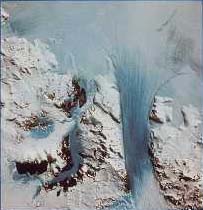
The figure to the left is an illustration of the flow of ice in the Antarctic region of the Earth. Ice flows readily, albeit slowly. Terrestrial glaciers are ample evidence of the fact that ice can move.
...more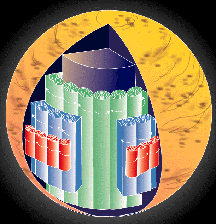
Motions, or currents in the interior of a gas-giant planet such as Uranus may be very different from the motions typical of the Earth's interior. A second idea for the motions in the interior of a gas-giant
...more
Magnetospheres are generated with 1.) magnetic materials and 2.) with motions within the magnetic material. The terrestrial planets generate magnetospheres within the iron cores at the center. This leads
...more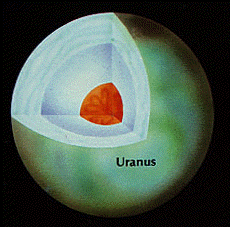
The Giant planets do not have the same kind of structure inside that the terrestrial planets do. Their evolution was quite different than that of the terrestrial planets, and they have much more gas and
...more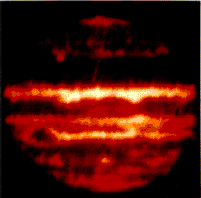
In astromony, it is a usual procedure to calculate the luminosity of a star, and this calculation indicates the energy and the temperature of the star. When the luminosity of the outer planets was calculated,
...more
Motions in the interior of a planet help carry heat from the inside to the outside. The drawing to the left illustrates the kind of movements that happen in interior of a planet. Material rises from the
...more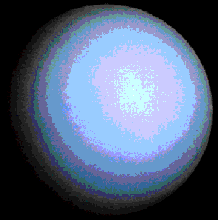
Atmospheres of the giant planets have definitely evolved from their formation out of the primitive solar nebula. How much they have evolved remains to be seen, however. Because of their enormous gravity,
...more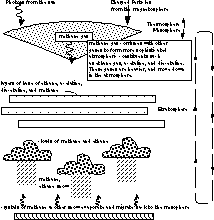
The major gaseous constituent of the atmosphere is methane. At the uppermost reaches of the atmosphere, near the thermosphere, methane gas breaks apart due to the influence of energetic photons or charged
...more













